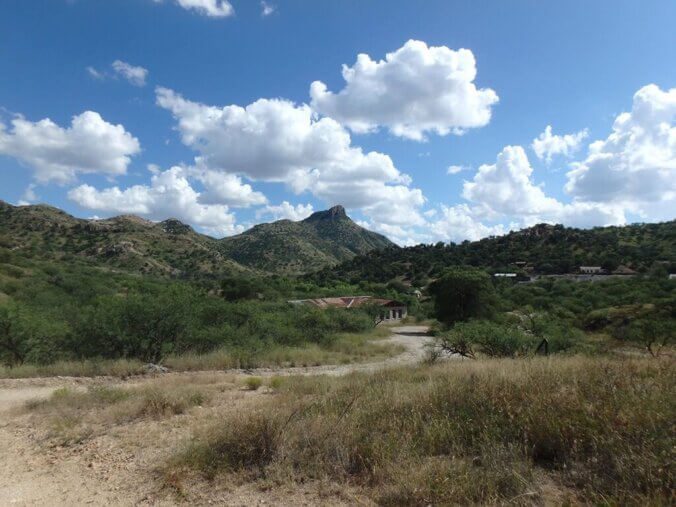Ruby Ghost Town’s History
In southern Arizona near the Mexico/Arizona border, Ruby is a privately-owned abandoned mine and town once the state’s largest zinc and lead-producing mine. Originally named Montana Camp after the first strike in the Montana vein in the late 1870s, Ruby reached its peak in the 1930s with a population of 1200 people. However, the mine closed down in 1940 and was abandoned by 1941.
Despite its decline, Ruby’s history is still a fascinating one. In the 1920s, a double homicide took place in the town, leading to the largest manhunt in the southwest and the first-ever airplane used in an Arizona manhunt. Visitors can tour several buildings and still-standing structures, including the schoolhouse, general store, and jail. In addition, the town has a lake with a beach made from mining tailings.
Ruby’s story is a testament to the boom and bust cycles that have characterized Arizona’s mining industry. Its preserved structures and stunning natural surroundings make it a popular destination for history buffs, hikers, and ghost town enthusiasts. Whether you’re interested in the town’s rich past or simply looking to explore the beauty of the Sonoran Desert, Ruby is well worth a visit.
Know Before You Go
- Region: Southwest United States
- Location: Ruby, Arizona
- Coordinates: 31.461935615400712, -111.23785244944789
- Costs: Several types of permits are offered.
- Schedule: Check the website for visiting hours
- Attraction Type: Ghost Town
My Visit
A friend was visiting from out of town, and we decided to head out to find Ruby. I had heard about it from several stories and wanted to visit before the temperatures were too hot for the season. Also, it was not too far from Tucson, making it a perfect day trip adventure.
There are two ways, one being a more rustic trail and requiring a high clearance 4-wheel-drive vehicle. Research directions, weather, and road conditions to ensure the roads are passable. We choose to take the scenic route knowing the Jeep would handle the drive without issues. It was a nice drive through forest service/country unpaved dirt roads, and the directions and Google Maps lead us there. Stopping at the caretaker’s accommodation, we paid $15 per person for the day, and then he briefed us on the places we could and should not go. He suggested staying away from several places for our safety near the mine and its trailings. At the time, some areas had become unstable, and he was afraid of people getting stuck or injured in those areas.
The overall size of the place is not large, but because it was a hotter day, we decided on several of the locations and drove to them. You could park at the front and walk around had the temperatures been cooler. Several buildings are still standing that you can poke around in, and then there is the beach and pond. Yes, there is a beach created from the mining tailings that you can spend time on.
Overall it was a neat little place to visit. The organization that owns it has been working on it for years, and the upkeep, while limited, allows you to understand what this mining operation was like and what it would have been like to live and work there.


























